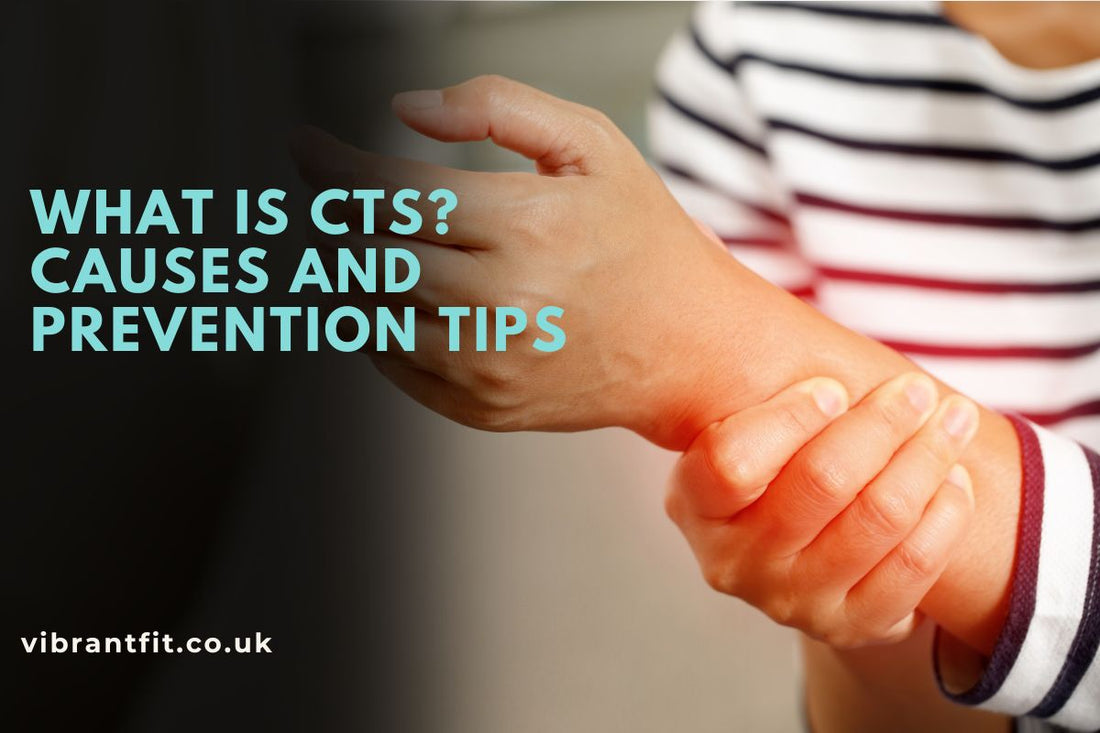
What is CTS?
Share
Carpal Tunnel Syndrome, or CTS, is a common wrist condition that affects many people at some point in their lives. You might have noticed tingling or numbness in your fingers or hand and wondered what it means. CTS occurs when a key nerve in your wrist gets squeezed or irritated. Knowing about CTS early helps you manage it effectively and avoid serious problems that interfere with daily life.
What is Carpal Tunnel Syndrome?

CTS happens when the median nerve, running through a narrow passage in your wrist called the carpal tunnel, becomes compressed. This nerve controls some thumb muscles and sends sensations from the thumb, index, middle, and part of the ring finger to your brain. Think of the carpal tunnel as a tight hallway in your wrist. If something narrows that hallway, the nerve gets squashed. CTS is more common in women and people over 40, but anyone can develop it. This nerve pressure causes discomfort and problems with hand movement.
Symptoms of Carpal Tunnel Syndrome

Symptoms of Carpal Tunnel Syndrome (CTS) often develop gradually and may be easy to overlook at first. Many people start to notice unusual sensations in their hands, such as numbness or tingling, particularly in the thumb, index, and middle fingers. This can be accompanied by a dull ache or pain in the wrist or hand, which might worsen during certain activities or at night. Some describe the feeling as pins and needles, similar to fizzing or electric shocks running through their fingers. Over time, weakness can set in, making it difficult to grip objects firmly or perform fine motor tasks.
Common symptoms include:
-
Numbness or tingling in the thumb, index, and middle fingers
-
Pain or dull aches in the wrist or hand
-
Pins and needles sensations, like fizzing or electric shocks
-
Weakness in the thumb or trouble gripping objects firmly.
Causes and Risk Factors of CTS
Carpal Tunnel Syndrome (CTS) can develop for various reasons, often related to anything that puts extra pressure on the median nerve inside the wrist. Repetitive motions that involve bending or gripping with the wrist are common culprits. Sometimes, swelling or injuries around the wrist narrow the space in the carpal tunnel, squeezing the nerve. Certain health conditions like arthritis or diabetes can also increase the risk. Hormonal changes, such as those during pregnancy, and the use of vibrating tools can contribute as well. Additionally, some people are more prone to CTS due to factors like age, gender, or family history.
Key causes and risk factors include:
-
Repetitive wrist movements such as typing or using hand tools
-
Swelling or injury around the wrist
-
Medical conditions like arthritis or diabetes
-
Hormonal changes during pregnancy
-
Use of vibrating tools like drills
-
Being over 40 years old
-
Female gender
-
Family history of CTS
-
Carrying extra weight
- Jobs or hobbies involving frequent wrist bending or gripping.
How is CTS Diagnosed?
When you see a doctor about possible Carpal Tunnel Syndrome, they’ll start by asking about your symptoms and examining your wrist and hand. Simple tests like tapping or bending your wrist may be done to check for tingling or numbness. If needed, nerve conduction tests can measure how well the median nerve is working. Sometimes, imaging like ultrasound or MRI is used to spot swelling or other problems. Getting an early diagnosis is important to avoid lasting nerve damage, so don’t wait to get checked if you notice symptoms.
Treatment Options for Carpal Tunnel Syndrome
Most people begin with non-surgical treatments to ease nerve pressure and symptoms:
-
Wearing a wrist splint, especially at night, to keep the wrist straight
-
Avoiding activities that involve frequent wrist bending or gripping
-
Physical therapy to strengthen and stretch the wrist and hand
-
Over-the-counter painkillers such as ibuprofen or paracetamol
-
Corticosteroid injections to reduce inflammation.
Living with Carpal Tunnel Syndrome
Managing CTS involves small daily changes. Wrist supports can relieve pressure and prevent flare-ups. Ergonomic tools and good posture help protect your wrists during repetitive tasks. Regular wrist and hand stretches maintain flexibility and reduce tightness.
Pay attention to your symptoms. If they return or worsen, seek medical advice quickly. Early treatment helps avoid permanent nerve damage and loss of hand function.
Prevention of Carpal Tunnel Syndrome
Preventing Carpal Tunnel Syndrome isn’t always easy, but there are simple steps you can take to lower your risk. Taking regular breaks during activities that strain your wrists helps reduce pressure on the median nerve. Stretching your hands and wrists before and after work or exercise keeps your muscles flexible. Using ergonomic tools and maintaining good posture can also protect your wrists from unnecessary stress. Finally, staying at a healthy weight and managing conditions like diabetes can make a difference. These small habits can go a long way in keeping your wrists healthy over time.
Also read : What is Arthritis of the Thumb
Recommended Supportive Braces for Wrist Relief

If you’re struggling with wrist pain or Carpal Tunnel Syndrome, the right brace can really help. The ErgoThumb Spica Splint is great if your thumb needs extra support—it eases the strain but still lets you move comfortably. Then there’s the TFCC Support Wrist Brace, which is perfect for stabilising the tricky parts of your wrist and easing pressure, especially if you have pain on the little finger side. For something you can wear during most of your day, the UltraFlex Wrist Brace is lightweight and flexible, giving your wrist gentle support without feeling bulky. These options cover different needs, so you can find what works best to reduce pain and help your wrist heal.
Conclusion
Carpal Tunnel Syndrome is common but manageable. Understanding its symptoms, causes, and treatments helps you act early. Most people find relief through lifestyle changes or medical care. Don’t ignore tingling or numbness—they signal your wrist needs attention. Consult a healthcare professional if you suspect CTS and keep your hands healthy.
